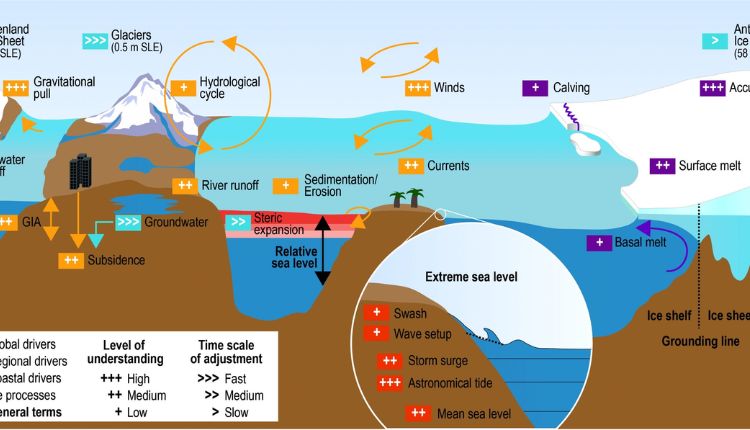Introduction: Living on the Edge of Change
Coastal living has always been synonymous with beauty, serenity, and sunshine. Yet for homeowners in Florida’s island communities, including Marco Island, that paradise now comes with a price. Rising sea levels, salt corrosion, and increasingly powerful storms are putting immense pressure on coastal infrastructure—especially on roofs, which bear the brunt of sun, wind, and salt air every single day.
As environmental conditions evolve, so too must the way homes are built and maintained. Roofing standards across Florida’s coastal regions are being reimagined to meet these challenges head-on, balancing resilience, efficiency, and longevity.
The New Coastal Reality: More Water, More Wear
According to the National Oceanic and Atmospheric Administration (NOAA), Florida’s sea levels are expected to rise between 10 to 17 inches by 2040. For low-lying regions like Marco Island, that’s not just a statistic—it’s a daily reality. Increased saltwater intrusion and humidity intensify roof degradation, while flooding and wind-driven rain expose vulnerabilities in older materials and designs.
Traditional roofing systems, once suitable for mild coastal conditions, are now proving inadequate in this new environment. Salt crystals accumulate on surfaces, corroding metal fasteners and degrading sealants. High humidity accelerates mold growth, and persistent sun exposure weakens roofing membranes over time.
The result? Roofs fail faster, maintenance costs climb, and insurance requirements tighten.
The Shift Toward Resilient Materials
Florida’s coastal homeowners are leading a quiet revolution in construction materials. The focus has shifted from short-term affordability to long-term resilience.
Metal roofing, once reserved for industrial structures, is now a top choice for luxury coastal homes. Its natural resistance to wind, fire, and salt corrosion makes it ideal for oceanfront living. High-quality aluminum and zinc coatings offer additional protection, while reflective finishes help lower indoor temperatures.
Synthetic roofing materials, including composite shingles and polymer tiles, are also gaining traction. Designed to mimic the look of slate or wood, these materials resist moisture absorption and warping—a critical feature in humid coastal environments.
Meanwhile, tile roofing, a Florida classic, remains popular but with key upgrades: stronger fastening systems, better underlayment, and impact-rated tiles engineered to resist hurricane-force winds.
Building Codes: From Reactive to Proactive
Hurricane Andrew in 1992 changed everything for Florida’s construction standards. Since then, building codes have evolved with each major storm, pushing roofing requirements toward greater strength and safety.
However, with climate change accelerating environmental shifts, regulations are beginning to emphasize prevention over repair. The Florida Building Code now enforces stricter wind uplift resistance, waterproofing, and structural anchoring for coastal zones.
Local jurisdictions, including Collier County, are also integrating new coastal resilience guidelines that account for salt exposure and long-term sustainability. These evolving standards mean that homeowners replacing or upgrading their roofs today are effectively future-proofing their properties.
The Role of Technology in Coastal Roofing
Modern roofing design isn’t just about materials—it’s about smart systems that predict, prevent, and adapt.
Coating technologies now protect against both UV degradation and salt corrosion, extending roof lifespans by years. Seamless waterproof membranes prevent leaks in flat or low-slope roofs, while self-adhering underlayments provide extra protection during heavy rainfall.
Some cutting-edge systems even integrate sensor-based monitoring, allowing homeowners to detect early signs of moisture intrusion or structural stress. This proactive approach helps prevent small issues from turning into catastrophic failures—a major advantage in storm-prone areas.
Sustainability: The New Standard of Strength
Sustainability and durability are becoming synonymous along Florida’s Gulf Coast. Homeowners increasingly want roofs that not only resist damage but also reduce environmental impact.
Reflective “cool” roofs are gaining traction for their ability to reduce energy consumption by reflecting solar heat, keeping homes naturally cooler during Florida’s hot months. Additionally, solar-integrated roofs are making it possible to generate clean energy without sacrificing aesthetic appeal—a feature particularly appealing to eco-conscious coastal residents.
In some neighborhoods, rainwater-harvesting roof designs are emerging, capturing runoff for irrigation or emergency use. This dual-purpose innovation aligns with the growing awareness that sustainable living and coastal resilience go hand in hand.
The Importance of Local Expertise
While material innovation and building technology are key, nothing replaces local knowledge. Contractors who understand the specific environmental conditions of Marco Island bring an unmatched level of insight.
Experienced roofing Marco Island FL professionals know how to address salt exposure, optimize ventilation in humid conditions, and comply with both state and county codes. They also understand how to design roofs that complement the island’s architectural style while ensuring maximum structural integrity.
Homeowners working with local experts benefit from region-specific guidance that out-of-state contractors may overlook—like choosing fasteners resistant to salt corrosion or coatings that handle both UV and humidity extremes.
Looking Ahead: The Future of Coastal Roofing
The future of roofing in Florida’s coastal communities lies at the intersection of innovation and adaptation. As sea levels continue to rise and weather patterns shift, resilience will define the success of every new build and renovation.
Expect to see more hybrid solutions—roofs combining traditional materials with smart technologies, and homes built to “breathe” better in humid conditions. Architects and builders are also turning to resilient design principles, ensuring that homes can recover quickly from storm damage with minimal long-term impact.
Ultimately, the lessons learned on Marco Island are setting a precedent for coastal regions worldwide: homes must evolve in harmony with the environment, not in defiance of it.
Conclusion: Building Strength Above the Shoreline
For Florida’s coastal homeowners, the roof has become more than a protective barrier—it’s a symbol of resilience. By embracing modern materials, sustainable design, and local expertise, homeowners are creating roofs that can stand against rising tides and changing skies.
The future of coastal living depends on foresight, innovation, and adaptability—and Marco Island is proving that even in the face of environmental challenges, it’s possible to build stronger, smarter, and more sustainably than ever before.






